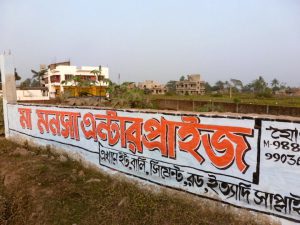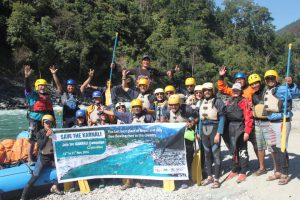On 21 December 2016, the Supreme Court of Justice of the Nation (CSJN) suspended the construction of the “Kirchner” and “Cepernic” dams in the province of Santa Cruz, in southern Argentina.
The Kirchner-Cepernic Complex (a project previously known as the Cóndor Cliff – La Barrancosa, revived by former president Cristina Kirchner) is designed to harness hydroelectric power from the Santa Cruz River in the province of the same name. It is the third largest dam in Argentina, after Yacyretá and Salto Grande. Conservationists have expressed concern about its impacts on the river’s flora and fauna.
It is estimated the project will provide 5% of electricity generation nationally. A consortium made up of Electroingeniería S.A., China Gezhouba Group Company Limited and Hidrocuyo S.A. is set to execute the project after being awarded the contract in August 2013. They bid US$4.7 billion to complete the work in five and a half years with financing from three Chinese institutions; China Development Bank, the Bank of China and the Industrial and Commercial Bank of China.
The Supreme Court’s decision follows an action initiated by the Argentine Association of Environmental Lawyers of Patagonia and the Forest Bank Foundation (Fundación Banco de Bosques). The court decided unanimously to suspend work on the dams until such time as the Environmental Impact Assessment (EIA) process and a hearing required under Argentina’s Environmental Impact Law on Water Works for Energy (law 23,879) have been implemented. These had not been in force previously due to improper regulation.
The ruling has left most of the works paralysed, with no definitive date for resumption, the company has said.
Law 23,879 sets out a very specific EIA procedure. Given that the project affects provinces outside Santa Cruz three national Ministries (Environment and Sustainable Development; Energy and Mining, and Health) will now be involved during the initial stages, which include the supervision and approval of impact studies. These studies will then be submitted to the National Congress which will particpate in the EIA process, analyse its results and submit them to a public hearing in which the government and representatives of companies, NGOs, researchers, academics and interested members of the public will participate. Once this procedure is completed, both Chambers will produce a report for approval.
Parallel to this process, there is another legal action that seeks to block the construction of the dams. This will proceed before the Judiciary, which will aim to rule definitively on the project, though this could take several years and could delay the advancement of the EIA procedure described above. For this reason, the case was referred to the Federal Court of First Instance in Contested Administrative Proceedings No. 11 under the responsibility of high-profile judge María José Sarmiento, who will continue to guide the progress until a final judgment is handed down.
Implications
The presence of Parliament in the process of reviewing the EIAs and holding the Public Hearing, provides the opportunity for a more open and participatory debate on the real impacts that the dams will produce, as well as on the energy alternatives which have so far not been considered.
However, Argentina holds legislative elections in 2017, which means there may be limited time to oversee this process in congress and any decisions may be highly politicised. It should also be borne in mind that the judiciary will continue to play a key role in this process since the actions initiated will continue to be developed alongside the EIA procedure, which could lead to an order for the final suspension of the construction of the dams.
Another key issue is the ‘cross default’ clause. The financing agreement signed with China Development Bank for the dams also includes finance for the Belgrano-Cargas Railway. As such, the cancellation one project could halt the financing of others. So while the hydroelectric complex is already dependent on a proper feasibility analysis, it also depends on the receipt of funds for other infrastructure works.
However, Chinese institutions may also lobby the national congress and other groups that manage the EIA process so they approve the dam project. The project was confirmed in April 2016, only to be overturned by the Supreme Court’s latest decision.
A new chance for the Santa Cruz River
The decision of the Supreme Court issued at the end of December 2016 presents an opportunity to analyse and evaluate the need for construction of dams on the Santa Cruz River.
This is a very important step as it re-establishes the legality that the process has so far lacked. A proper EIA necessitates the involvement of the state’s technical agencies, the participation of the National Congress and a Public Hearing.
However, in order for such a process to have worthwhile results, it must count on degrees of transparency and participation that have so far been found wanting. This is imperative. The government must guarantee access to relevant information as well as measures to ensure that the public hearing allows for the broadest and most equitable participation of all interested persons, putting an end once and for all to the fraudulent EIA process that has been carried out up to now.
As many experts have argued, the implementation of a proper EIA process will demonstrate that the main reason for persisting with the dams is the agreement signed with China preventing the review or cancellation of the project under the looming threat of considerable damages.
We hope that the process initiated by the Supreme Court will demonstrate the serious impact that the construction of dams would have on the Santa Cruz River. There is an urgent need to find other, more effective and viable solutions to Argentina’s energy needs.






